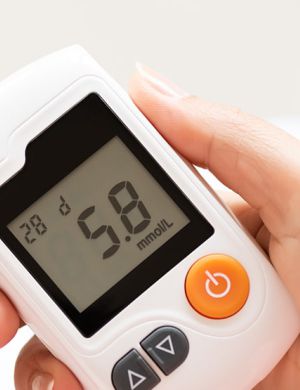
Cosmetics Testing Requirements in Emerging Markets: Opportunities and Regulations
The cosmetics industry is rapidly expanding across emerging markets like China, India, and Brazil, driven by growing consumer awareness and demand for beauty products. However, manufacturers seeking to tap into these lucrative markets must navigate complex cosmetics testing requirements to ensure regulatory compliance. This blog explores the opportunities and regulatory landscape in emerging markets and offers insights into meeting these requirements effectively.
The Growing Demand for Cosmetics in Emerging Markets
Emerging markets present an exciting opportunity for cosmetics brands. Countries like China, India, Brazil, and South Africa have seen a surge in demand for skincare, makeup, and personal care products. This growth is fueled by a rising middle class, urbanization, and increased spending on beauty and wellness.
However, entering these markets isn’t as simple as launching a product line. Each country has its own regulations for cosmetics testing and safety standards, which can pose challenges for manufacturers. Non-compliance can lead to product recalls, fines, or even bans, making it crucial to understand the testing requirements of each region.
Navigating Cosmetics Testing Requirements in Key Emerging Markets
China: A Shifting Landscape
China has historically required animal testing for imported cosmetics, making it a challenging market for cruelty-free brands. However, recent regulatory reforms are reshaping this landscape.
- Pre-market Testing: For imported cosmetics, China required animal testing for many years.
- Post-market Surveillance: Domestic and imported products may still undergo random inspections.
- Alternatives to Animal Testing: Since 2021, China has allowed certain general cosmetics (like shampoo or lotion) to bypass animal testing if companies meet specific conditions, such as having GMP certification.
While these changes make the market more accessible, compliance still requires careful documentation and adherence to stringent safety protocols.
India: A Growing Market with Simplified Regulations
India has banned animal testing for cosmetics, positioning itself as a cruelty-free leader in the region. However, the country still mandates safety assessments.
- Bureau of Indian Standards (BIS): All cosmetics must meet BIS specifications for ingredients and manufacturing processes.
- Labeling Requirements: Products must clearly state ingredients, expiration dates, and usage instructions.
- Mandatory Testing: Manufacturers must conduct microbiological and chemical tests to ensure product safety.
India’s regulatory environment is relatively straightforward, but attention to detail in testing and labeling is critical for compliance.
Brazil: Stringent but Accessible
Brazil is one of the largest cosmetics markets globally, governed by strict testing and regulatory requirements under ANVISA (National Health Surveillance Agency).
- Toxicological Testing: Products must undergo rigorous safety tests, including in-vitro and clinical studies.
- Ingredient Restrictions: Manufacturers must comply with ANVISA’s list of approved and prohibited substances.
- Registration and Licensing: All cosmetics require registration or notification, depending on their risk level.
Despite the regulatory challenges, Brazil offers a massive consumer base, making it a worthwhile investment for brands willing to meet these requirements.
Opportunities for Cosmetics Brands in Emerging Markets
- Growing Consumer Base: The rise in disposable income and consumer awareness creates a vast market for innovative products.
- Shift Towards Clean and Ethical Beauty: Consumers in emerging markets increasingly value cruelty-free and sustainable products.
- Government Initiatives: Many countries are simplifying processes to attract foreign investment, opening doors for international brands.
Brands that can align with these trends while meeting regulatory standards stand to gain a significant competitive advantage.
How to Overcome Regulatory Challenges
To successfully enter and thrive in emerging markets, brands must adopt a proactive approach:
- Invest in Research: Stay updated on the latest regulatory changes in target markets.
- Use Technology: Platforms like Vistaar provide comprehensive insights into cosmetics testing requirements, streamlining compliance processes.
- Partner with Local Experts: Collaborate with consultants familiar with local regulations to ensure accurate documentation and testing.
- Prioritize Sustainability: Highlight ethical and sustainable practices to resonate with eco-conscious consumers.
The Future of Cosmetics Testing in Emerging Markets
Emerging markets are evolving rapidly, and cosmetics regulations are expected to become stricter to ensure consumer safety. At the same time, advancements in alternative testing methods like in-vitro testing and AI-driven simulations are likely to simplify compliance.
By leveraging these innovations and adhering to local guidelines, cosmetics brands can unlock the immense potential of these markets while maintaining ethical and sustainable practices.
Conclusion
Entering emerging markets offers immense growth opportunities for cosmetics brands. However, navigating the unique testing requirements and regulations of each country is crucial to success. By staying informed, adopting cutting-edge technologies, and aligning with local preferences, manufacturers can tap into the growing demand for cosmetics in these regions while ensuring compliance.
If you’re looking for a streamlined way to manage cosmetics testing requirements, explore tools like Vistaar’s cosmetics regulations database for expert guidance.
Don’t miss out! Click here to stay in touch.
Categories
- Biopharma (58)
- Consumer Health (21)
- Cosmetics (11)
- Diagnostics (5)
- Digital Health (8)
- Food (2)
- Medical Device (112)
- OTC (5)
- Regulatory Intelligence (13)
- Standards (41)
Recent Blogs
Get the latest updates from Vistaar

CONNECT WITH US

Let's talk about how Vistaar can help you




